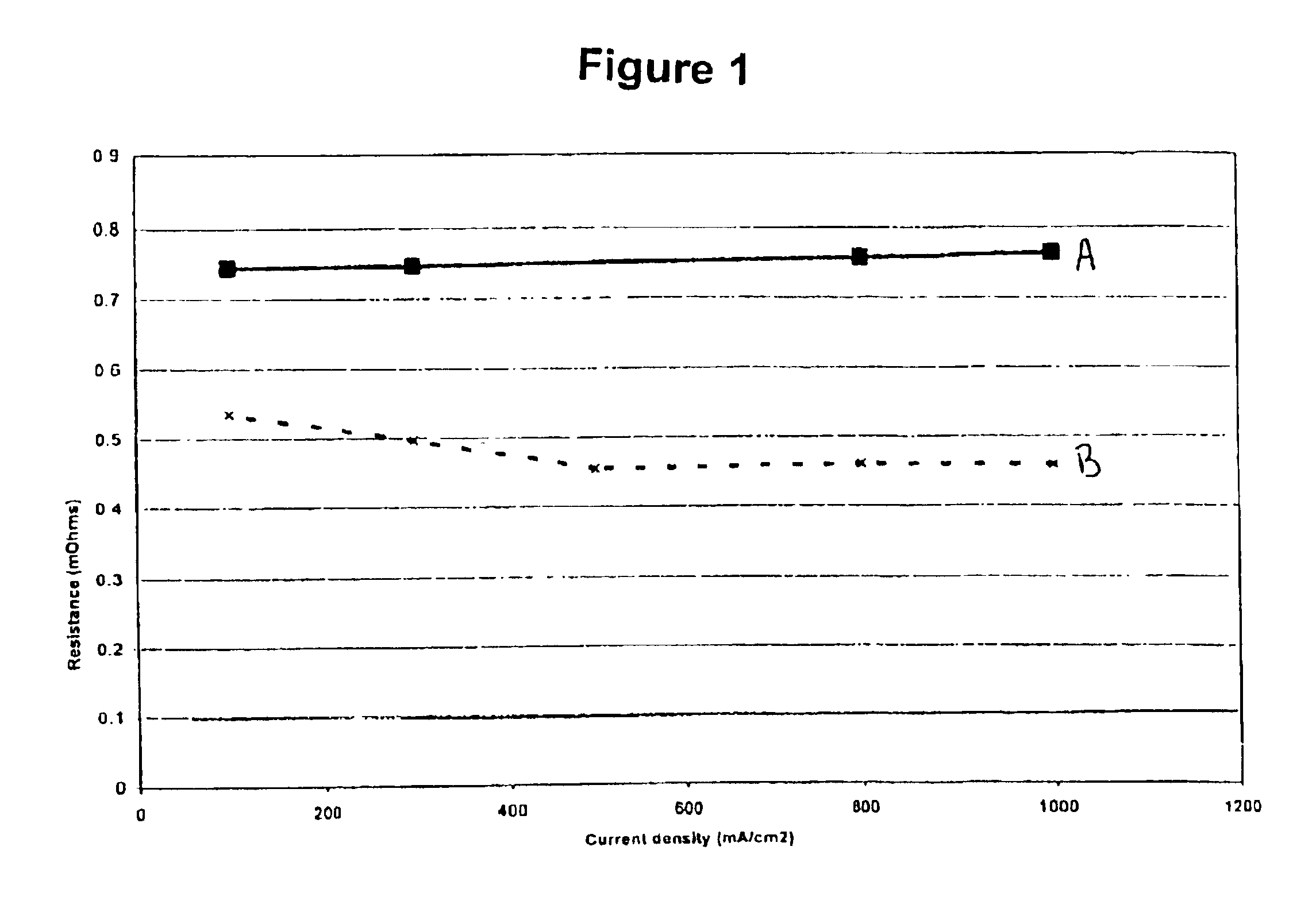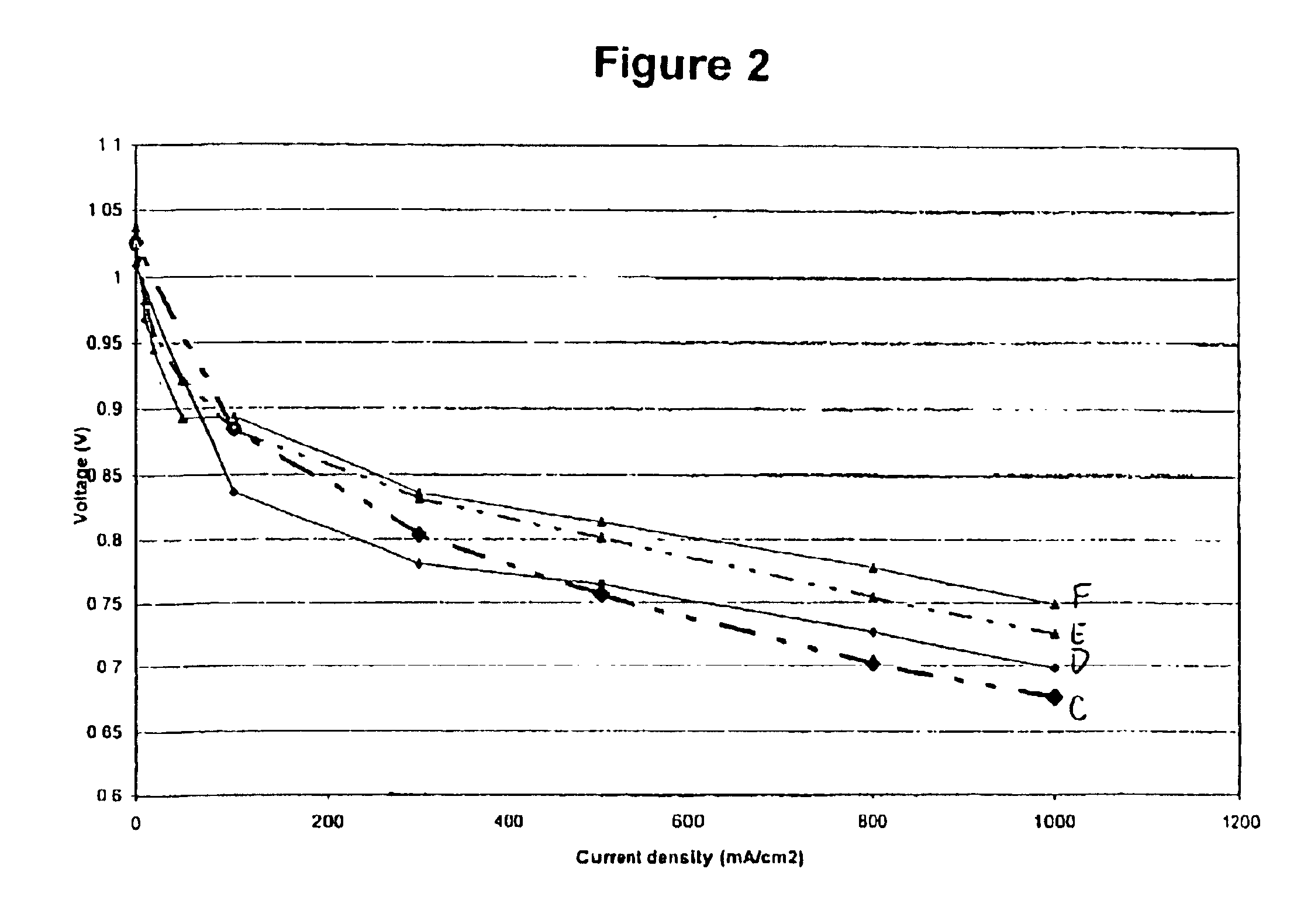Impregnation of ion-exchange membranes to improve electrochemical fuel cell performance
a technology of ion exchange membrane and electrochemical fuel cell, which is applied in the direction of anion exchangers, chemical/physical processes, electrical apparatus, etc., can solve the problems of acid doped membranes having the conductivity suffers at higher temperatures, and the acid doped membranes tend to have a high degradation rate, so as to improve the operation of the fuel cell and improve the effect of the fuel cell operation
- Summary
- Abstract
- Description
- Claims
- Application Information
AI Technical Summary
Benefits of technology
Problems solved by technology
Method used
Image
Examples
Embodiment Construction
FIG. 1 is a graph of resistance against current density comparing a membrane impregnated with perfluorotriamylamine against an untreated membrane. The structure of perfluorotriamylamine is as follows: (CF3CF2CF2CF2CF2)3N.
The membranes used were Nafion® membranes provided by DuPont Inc. “A” refers to untreated Nafion® 112 membrane measured at 105° C. whereas “B” refers to Nafion® 112 membrane impregnated with perfluorotriamylamine measured at 110° C. The treatment consisted of soaking the membrane in the neat perfluorotriamylamine solvent for one hour at 80° C. The membranes were bonded into membrane electrode assemblies (MEAs) and tested in-situ with the resistance measured at the bus plates.
Even though amines are not traditionally considered to be conductive, FIG. 1 illustrates a significant reduction in resistance after impregnating the membrane with perfluorotriamylamine. Furthermore, perfluorotriamylamine is suitable for use within the fuel cell environment as illustrated in FIG...
PUM
| Property | Measurement | Unit |
|---|---|---|
| temperatures | aaaaa | aaaaa |
| temperature | aaaaa | aaaaa |
| temperatures | aaaaa | aaaaa |
Abstract
Description
Claims
Application Information
 Login to View More
Login to View More - R&D
- Intellectual Property
- Life Sciences
- Materials
- Tech Scout
- Unparalleled Data Quality
- Higher Quality Content
- 60% Fewer Hallucinations
Browse by: Latest US Patents, China's latest patents, Technical Efficacy Thesaurus, Application Domain, Technology Topic, Popular Technical Reports.
© 2025 PatSnap. All rights reserved.Legal|Privacy policy|Modern Slavery Act Transparency Statement|Sitemap|About US| Contact US: help@patsnap.com



